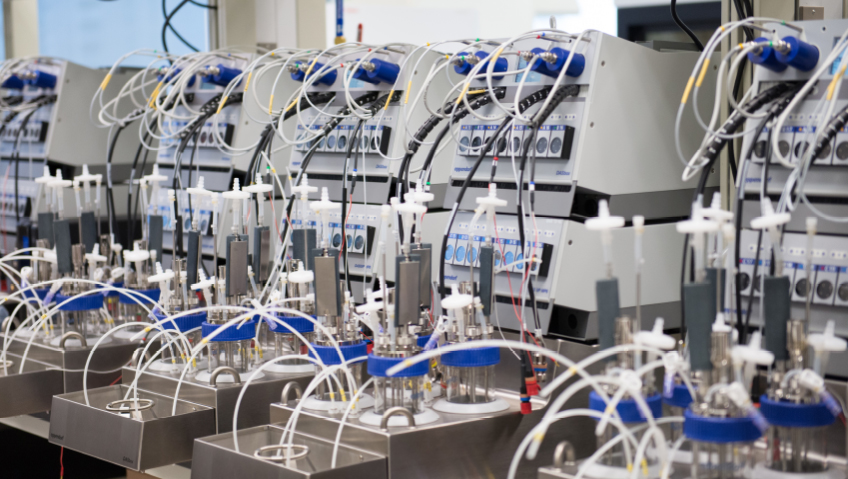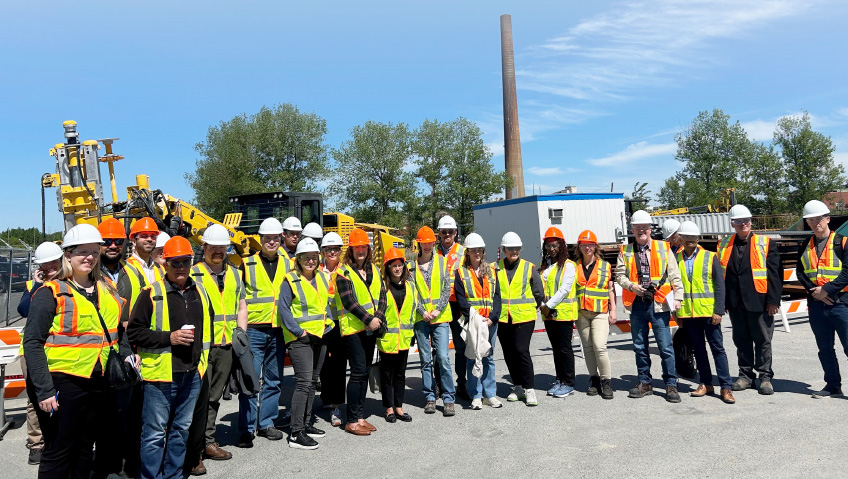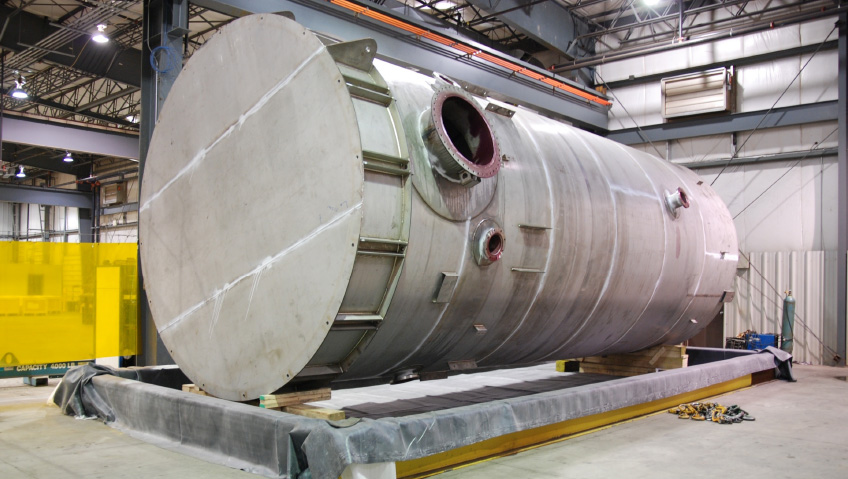Established 10 years ago to leverage scientific strengths in regenerative medicine in Canada, CCRM continues to assert Canadian leadership in the life sciences. With a particular focus on the promise of cell and gene therapy, the organization’s goal is to not only treat symptoms of diseases, but to cure them.
While CCRM initially focused on a number of areas, it understood that building an industry requires core capabilities in manufacturing around the products being developed, and Canada’s strength in innovation and science had created incredible clinical infrastructure for testing products in clinical trials.
“Before anyone ever was talking about gaps in manufacturing, CCRM made it a focus,” says Dr. Michael May, President and CEO.
So why is manufacturing important to an entity like CCRM that’s charged with helping develop technologies, and create and scale companies? “Manufacturing creates stickiness,” May says. “When manufacturing is done locally and companies are created locally, companies are apt to stay in the local ecosystem if the manufacturing is done there.”
Sticky factor
That vital sticky factor also extends to clinical infrastructure, “great” scientific communities like downtown Toronto, and access to capital.
On the manufacturing front, CCRM has employed a three-pronged strategy, with the first being to develop core technology platforms to fill gaps in manufacturing workflows for these very specialized and complex cell and gene therapies, says May. This involves hardware, bioreactors, equipment for characterizing the product and producing it at scale.
About five years ago, supported by the Canadian government, the company launched a partnership with Cytiva, formerly GE Healthcare, to build a centre of excellence for cell and manufacturing technologies where CCRM could tackle bottlenecks in cell and gene therapy workflow.
That partnership, and helping set up the Centre for Advanced Therapeutic Cell Technologies (CATCT), was one of Philip Vanek’s career highlights. Vanek, now CTO and a partner at Gamma Biosciences, was at GE Healthcare when he met with May in 2014.
“That was the brainchild of an almost chance meeting between Michael and myself, along with the opportunity and the foresight of the Canadian government to ask, what are the ingredients you need to help fulfill the mission of CCRM?” Vanek says.
“I thought if CCRM with their extreme visibility and ability could bring talent into the organization and offer CDMO types of services, and GE bring this ability to invent and commercialize new equipment for manufacturing, it felt like a win-win-win for everybody involved.”
That partnership with Cytiva drew worldwide attention for its size, scope, and vision of not only tackling gaps in technology, but also helping with the scale-up of therapeutics companies.
A lab for learning
“It really was a great place to try new technologies and work with partners to bring their technologies in,” says Vanek. “It was a great laboratory for learning about manufacturing and what it would take to manufacture cell and gene therapies.”
That technology translated to better understanding of processes for different types of cell and gene therapies, and the subsequent establishment of the CCVP (Centre for Cell and Vector Production), where new approaches are tested before they’re moved into manufacturing.
Vital support from FedDev Ontario, the Canadian government, and also Cytiva has played a huge role in the company’s ongoing success and ground-breaking discoveries.
The second prong of CCRM’s strategy was the launch of a clinical GMP-compliant manufacturing facility in 2019 in partnership with the University Health Network (UHN). This sizeable facility boasts 10 clean rooms, with two particularly designed for producing viral vectors used to modify cells.
“They represent an important kind of need and gap in the industry,” says May of the facility that employs close to 100 individuals and produces cell product for clinical trials for both academic and industry clients. “That’s important for the development of new therapeutics, but it’s also key to supporting companies being created in our ecosystems that need to take their products from development into clinical trials.”
The third pillar
The third pillar, which CCRM is working on now, involves taking manufacturing to the commercial scale via a partnership with McMaster Innovation Park in Hamilton.
While this is the final stage of support for companies that go through clinical trials and need commercial manufacturing, it’s also a place for companies from around the world to manufacture with a North American market in mind.
“After they’ve been tested in the clinical phase facility, we do plan on establishing them in the commercial facility to create a differentiated CDMO that’s seamlessly connected to the kind of manufacturing ecosystem that CCRM has created, but also to the pipeline of companies and technologies that CCRM has established to create this integrated comprehensive manufacturing strategy from front to back,” says May.
CCRM’s vision for what it’s done to date in terms of company creation is very ecosystem driven, and to that end, this industrial site in Hamilton will help create and extend its manufacturing ecosystem by setting up not just a manufacturing facility, but also supply chain and logistics partners, while training technicians to work in GMP facilities.
To solidify that strategy around training, CCRM has launched a new company with a sister organization in Montreal called CellCAN.
CATTI, the Canadian Advanced Therapy Training Institute, will work with the other non-profit, academic, and for-profit entities to launch its content and offerings in training for manufacturing over the next several years.
“We want to create companies that can be sustainable because of the manufacturing, and supported by the manufacturing capability,” says May. “Also, the companies we’re creating become clients of the manufacturing business that we do here.
“There’s this mutual feedback between creating companies that benefit from the manufacturing, while having the manufacturing building the clientele in the customer pipeline over time for the manufacturing.”
Canada’s capital
Although Canada is a small country in the scheme of things, it has great human capital and the desire to push boundaries, says Claudia Zylberberg, founder and now Executive Chair of Akron Biotech, from Boca Raton, FL. She became a CCRM board member two years ago, working with the board for advancements, understanding needs, giving advice and helping new companies looking to be part of CCRM.
“I think Canada is poised to grow because of the intellectual and human capital,” says Zylberberg. “I think that’s what CCRM is looking for, the expansion of more infrastructure for action for cell and gene therapy and manufacturing, which I think is the piece that’s maybe missing right now.”
Being close to the U.S. also provides an opportunity to grow this space and new modalities of therapies across borders, she adds, along with expanding its global footprint.
CCRM’s success building the foundation as a public-private partnership with academic and Industry partners and investors started with a team and core abilities that included manufacturing. Now, CCRM is making investments in companies and has supported 14 of them over the last several years.
In addition to the investment activity happening in this phase, CCRM has leveraged its manufacturing capabilities into a business that gives it the credibility to grow to the commercial scale in the next phase of manufacturing through partnerships with Cytiva and clients around the world.
Now, with only 10 percent of its funding coming from the government, CCRM as a public-private partnership is self-sustainable as well.
“We’re here to serve the community and build the ecosystem, so we want it to be sustainable to attract capital on the back of our investments and support,” says May. “Sustaining the CCRM model is done by establishing partnerships in different places in the world so we can create hubs that all work together under the kind of leadership banner we’ve created in Canada.”
The microscope turns
The COVID pandemic, adds May, has put a microscope on life sciences and manufacturing, creating an opportunity to leverage the learnings from this pandemic into not just vaccine support, but a broad bio-manufacturing strategy.
“We talked quite a bit at the beginning of COVID about how we’ve offshored almost all of our capacity manufacturing,” says Vanek. “It’s obviously stressed a lot of supply chains globally and showed us where some of the kinks in the armour were.”
In the long run, he adds, it does show the promise of these therapies and probably more importantly, the pace at which we can adopt and bring technologies on board.
May adds that he hasn’t yet seen investment in a strategy from the government. “It’s more investing in buildings and capacity and attracting foreign companies to come and create capacity, but there’s a big difference between capacity and capability.”
Both of these are needed to build ecosystems, and therein lies the real opportunity in bio-manufacturing in Canada, he says: By tying the ecosystem strategy to investments in bio-manufacturing, you can create a robust ecosystem for sustainability.
“We want to tie all this together in a coordinated and collaborative, very Canada-like strategy so we can continue to punch above our weight in manufacturing, like we punch above our weight in lots of other things,” says May.
An issue of talent
While CCRM’s purpose is tackling the big problems in cell and gene therapy, it also has its own issues to handle, including access to talent and capital.
In a rapidly growing industry with high demand for talent, CCRM must integrate the development of talent into its strategy, first attracting it and then retaining it in its ecosystem. “Otherwise all our good folks will be drawn away and we’ll need to attract others to come to Canada,” says May.
Ultimately, CCRM’s reason for doing the work they do is the promise and potential of cell and gene therapy, and without manufacturing in place, those therapy developers and their discoveries won’t get to the patients, he adds.
“They need us and Canada needs us because there’s nothing else like us in Canada. Without the ability to manufacture, the therapies will go offshore, and other jurisdictions will have first access to them.”
What’s just as important as the manufacturing is a stake in the ground to keep the companies they’re building here, May says, and the most important issue in all of this is the people, and keeping people in Canada.
Revolutionizing medicine
“There’s a health benefit that we’re talking about here, but there’s also an economic benefit to the strategy that’s really at the crux of our mission,” he says. “Cell and gene therapies are living therapies and incorporate living tissues which makes them very complex to manufacture.”
The advantage of such therapies, however, is they can provide cures.
For blood cancers like leukemia they can now take T-cells from a patient’s blood, genetically engineer those T-cells outside of the body to particularly target the tumour, and then infuse them back in the patient to destroy the tumour.
“The response rates from those types of therapies are 70 to 90 percent complete cures,” says May. “That’s unprecedented in medical therapy, especially for cancer. These are therapies that will revolutionize medicine, but they also require us to rethink manufacturing in significant ways. That’s why the technology development is an important part of our strategy.”
It’s also why the clinical phase is vital – ultimately leading to the commercial scale where everything comes together to generate impact.
“Why let someone else in the world develop all that knowhow?” asks May. “We should have it embedded in Canada as well as anywhere else.”
Zylberberg agrees. “I’ve been involved in government advising for different grants that were available there, and I’m understanding the Canadian government can see the value of having their own manufacturing and their own commercial scale available for their population and even for the world. It’s a great asset and a great action for the government to act upon.”
With Health Canada having approved numerous advanced therapies, the promise and potential of regenerative therapy is already making a difference.
“The future is here,” says May. “These therapies are being given to patients now and CCRM is an important player in helping those therapy developers.”






